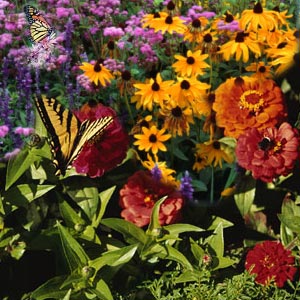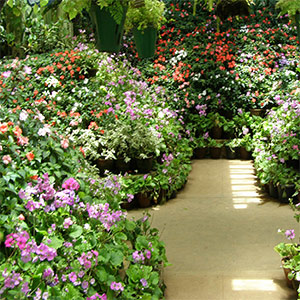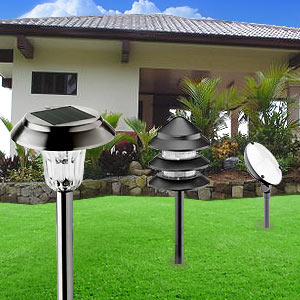Butterfly Garden

The Painted Lady, the Red Admiral and the Common Buckeye are looking for an attractive garden in your neighborhood. Just visualize these harmless, innocent, yet beautiful and gorgeous butterflies flutter amidst flowers in your garden, perched on green leaves, drinking nectar from sweet flowers.
These three butterfly species like others in their group are very choosy insects. How do you attract a hungry butterfly to your garden? What do they look out for? What are the plants and flowers most preferred by butterflies? What changes you can bring in your existing garden to make it butterfly friendly?
Proceed further to find answers to these questions and a host of related information on butterfly and gardening. Become an informed butterfly gardener and a conscious environment protector. Welcome the royal garden visitor to add color and beauty to your butterfly garden – the free-spirited butterfly.
Know thy visitor – Butterfly family
- Butterflies have existed on this earth for 150 million years
- Except in Antarctica, butterflies are found on all continents
- Around 20,00 species of butterfly exist in the world
- North America (North of Mexico) is home to 725 species
- Average life span of adult butterfly is one month
- Smallest butterfly lives only for a week
- Monarchs, Mourning cloaks live up to nine months
- Unique wing colors and patterns help identify butterflies
- Climate change and loss of habitat affect butterfly population
- Butterflies are extremely sensitive to changes in environment
- Butterflies (depending on species) weigh 0.04 grams to 0.3 grams
- Female butterfly is larger than male butterfly
- Butterflies are unmindful of people's presence
- Butterflies can smell with 'chemoreceptors'.
Butterfly garden
Butterflies are in search of two important, favorable factors in a garden. The adult butterfly needs food in the form of nectar from flowers. The female butterfly, in addition to sweet nectar searches for host plants, an ideal place to lay her eggs. A garden that is endowed with these two favorable factors provides shelter and water promises to attract flock of butterflies' day in and day out.
A garden is considered the mirror of one's mind. You can create a vibrant butterfly garden in tune with the rhythm of your mind. All that it requires is awareness about what plants and flowers attract them, what type of a garden environment is suitable, what should be avoided in the garden and how to maintain the garden so as to retain these pretty visitors.
Awareness of butterflies native to your region will be an added advantage that helps in planning the most appropriate butterfly garden. Take some time off to engage in research on the butterfly species native to your region. Refer books, check with other butterfly enthusiasts to gain valuable information on this aspect.
Plants and flowers: Understanding the frequent natives of your region will help in selecting and planting related plants. Butterflies are at their peak of activity from early spring through frost. Provide generous patches of many types of plants, shrubs, vines and trees in your butterfly garden. During the night as well as on cloudy days, many butterfly species prefer to roost on thick shrubs.
Select plants that provide continuous bloom, to ensure perennial supply of nectar for the butterflies. It is an established truth that butterflies prefer plants with clusters of short tubular fragrant flowers, flowers with large flat petals, single flowers rather than double flowers facing upward direction.
Flower colors too attract butterflies. It is common to see plants that yield pink, red, purple, orange or yellow colors in many successful butterfly gardens. For instance, hibiscus, lavender, goldenrod, zinnias, range-eyed, coral-bells, cosmos, daisies are examples of nectar-producing, vibrant flowers preferred by most butterfly species.
Research indicates that butterflies are attracted to a wide area with large masses of a single color or closely resembling colors. A garden with mixed colors doesn't appeal to butterflies.
Host plants: As the female butterfly gets ready to lay eggs, she begins her search for host plants. She locates plants the leaves of which will be suitable food for the caterpillars. Of the 60-150 eggs, only 5% survives. The tiny caterpillars that emerge from eggs survive by eating the leaves of these plants. If the leaves are unsuitable, the caterpillars starve and cannot survive. Though most of the native plants of specific species are suitable for caterpillars, you can also plant special hosts. This will attract more butterflies and also provide an excellent opportunity to watch the butterfly lay eggs.
Butterfly garden layout
Imagine a garden without sunlight. All the efforts in selecting species-specific plants may go kaput if the garden is devoid of fresh sunlight. Not only have the plants, the butterflies too prefer a site awash with sunlight for at least 5-6 hours a day. Before they set out to fly, they need sunlight to warm up their circulatory system. Further, the fragile butterflies cannot withstand high-speed wind blowing into your garden.
They prefer to linger in gardens with sunny locations, sheltered from gusts of wind. If the garden location is wind-prone, you can offer wind protection in the form of a fence, wall, hedge or a tree lined area. The butterflies schedule their day by basking on sun-warmed stones, rocks and logs or gravel paths in the early mornings. With the rise in temperature, they shift to warmer flower surfaces to drink sweet nectar.
Water: Butterflies too require water. In the literal meaning, butterflies cannot drink water; they can however lick water from moist surfaces. Butterflies need the minerals that are dissolved in water as it supports in maintaining their 'animal metabolism'. Care for your butterflies, provide a tray or basin with moist sand and add some table salt to provide the necessary nutrients needed for the special visitor.
'No' to insecticides: Every butterfly enthusiast who wishes to keep a healthy garden will say 'no' to insecticides. There cannot be an other way to kill the butterflies. Instead, make conscious effort to select plants with lesser pest problems. Fungicides, selective miticides and insecticidal soaps can be the best alternative in extreme cases.
Get ready to invite royal visitors to a royal garden that provides ample sunshine, fragrant flowers and safely secured from insecticide usage. Watch the tiny caterpillar emerge from the hatched egg. Look for butterflies that snuggle on shrubs on a rainy day. You may soon find it difficult to leave your beautiful butterfly garden.
Top of the Page: Butterfly Garden
Tags:#butterfly garden

Eco Friendly Homes
Garden Maintenance
Organic Gardening
Vegetable Garden Layout
Xeriscaping
Hydroponics Gardening
Feng Shui Garden
Ornamental Plant
Container Garden
Growing Succulents Indoors
Landscape Design Idea
Herb Garden Design
Window Garden
Lawn Mowing
Lawn Maintenance Tips
Orchid Care
Bonsai Tree
Cactus Plant
Thanksgiving Cactus
Rock Garden
Gardening Accessories

Bird Feeder
Leaf Blower
Solar Bird Bath
Lawn Sprinkler System
Outdoor Garden Furniture
Garden Fountain
Butterfly Garden
Electric Lawn Mower
Garden Pond
Landscaping

Landscaping
Landscape Lighting
Outdoor Canopy
Solar Garden Lights
Garage Plan
Home Improvement
Home Furnishing
Home Improvement Catalog
Feng Shui
Top of the Page: Butterfly Garden
Popularity Index: 101,147

